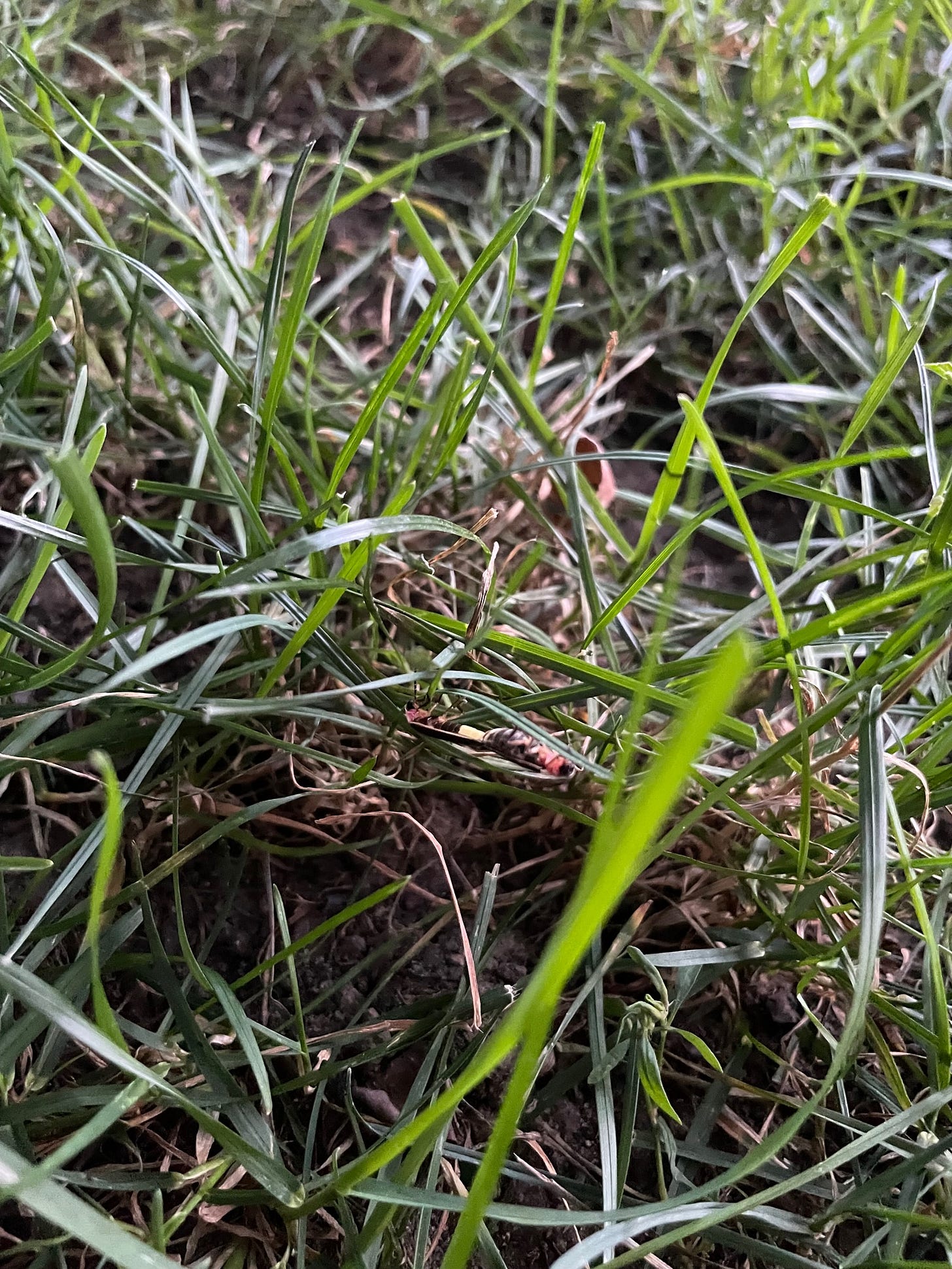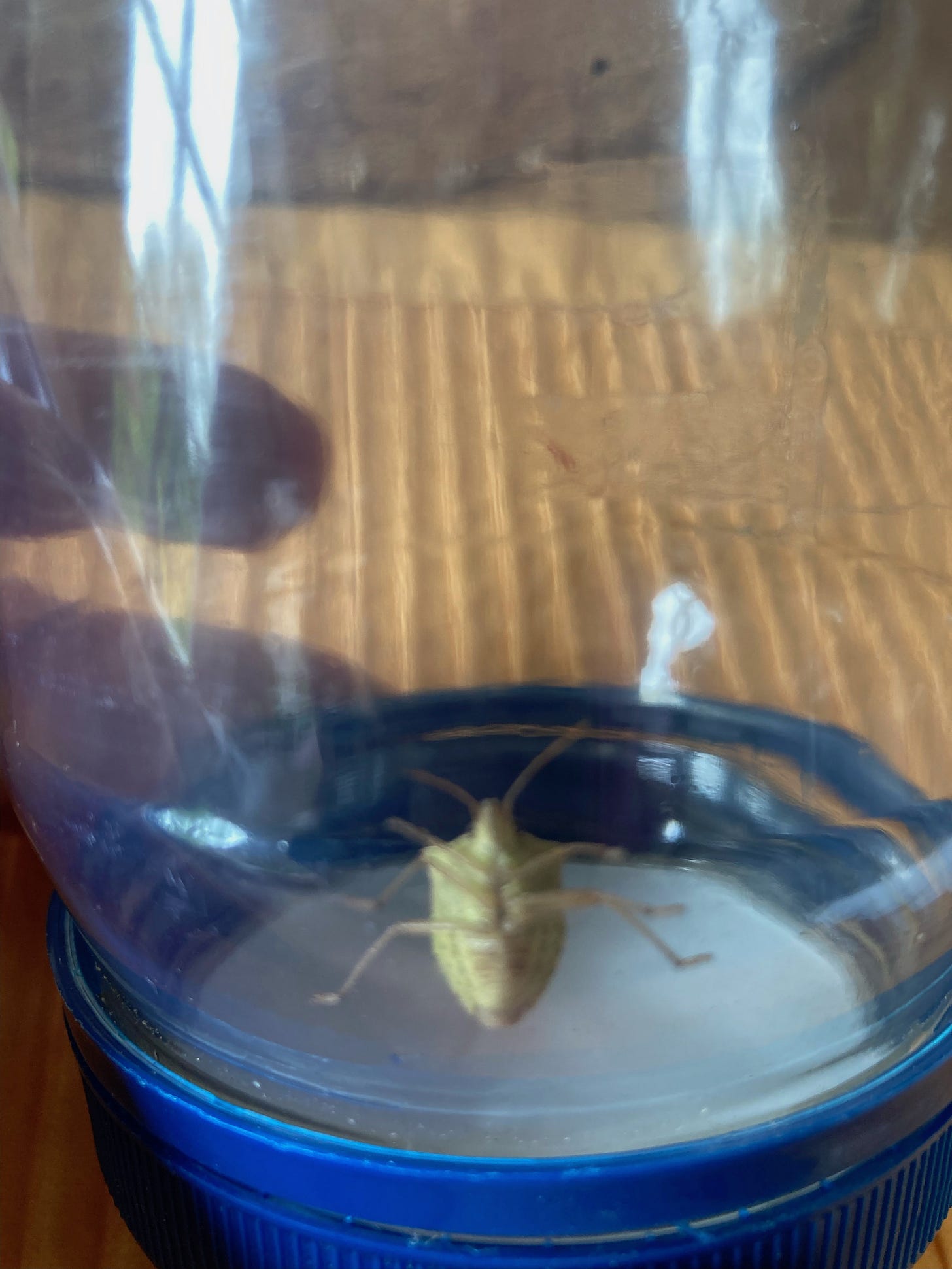ISSUE #01: Summer Romance - Firefly Season
It's actually not weird and very normal that I spent an entire concert watching two bugs mate.
On Monday of this week, I trekked all the way to the Brooklyn Botanic Garden for something called a "Soundbath," during which a group of performers played stringed and electronic instruments and sang breathily about plants to an audience sprawled across the Cherry Esplanade on picnic blankets and towels, encouraged to sleep or vibe or do yoga through the 90 minute performance. The Soundbath started after sundown, right in the middle of peak firefly hour.
Living in the middle of a city, it's easy to forget that fireflies are actually all over the place. I get a little thrill whenever I see one flashing on my street at dusk, but in a wilder area like the Garden, with more grass and less concrete, they're everywhere. Here in New York, our native firefly species is Photinus pyralis, which is also the most common firefly on the continent. There are about 2,000 species worldwide, and most of them look pretty similar: long, stiff elytra covering their wings (they're beetles, not flies), a shield on top of their head, big bulging eyes, and a back end that bioluminesces with the help of a chemical reaction inside their bodies. They're predators, but not cannibalistic, like their sister genus Photuris, the "femme fatale fireflies" whose females prey on males of other species to consume their spider-repellent blood. Nor do they grow to human hand size like the Lamprigera of Southeast Asia (CLICK AT OWN RISK).
Photinus pyralis males and females also look relatively similar, unlike other species whose females never grow wings at all, staying in their grubby larval stage for their whole lives. Photinus females have wings, but they don't fly around as much, preferring to stay low and hidden to wait to be found. Work is for men.
Fireflies flash to mate. Males take flight when the sun gets low, cruising around for a few hours and blinking at timed intervals specific to their species. We know what chemicals and enzymes are involved in the process, but we don't know how they do it, a fact that gave me the same kind of "how haven't they figured this out by now???" insane feeling I got when I read this book about how we don't know where eels come from. Their entire mating process relies on being able to see and respond to each other: males in the air flash in J-shaped arcs, and females in the grass flash to answer them within seconds. If the male sees her, he heads in her direction and keeps flashing, waiting for her to flash again. The process repeats until he finds her, lands, and gently crawls around on top of her before they join their backends together, which is how most bugs tend to do it.
This is exactly what I saw, for the first time in my life, in the middle of the Botanic Gardens, distracting me completely from the waves of ambient noise and whispered plant names washing over a silent, vibing audience. I couldn't believe what I was seeing, or how lucky I was that it was happening right next to me. I moved my towel closer to them, clutching a short stalk of grass, so that no one walking around would accidentally step on them. I took a couple pictures of them on my phone, which turned out blurry, as if I was a firefly private investigator sneaking photos of a firefly businessman's cheating firefly wife. (See above.) Every few minutes I'd lean over and check on them with my phone's flashlight, to see if they were done. They were still there when I was packing up my stuff to leave. Later, when I was back home googling, I learned that the process lasts all night.
Fireflies have been in decline in many areas around the country. Light pollution, we think, is to blame, with streetlamps and buildings kept lit all night and distracting all kinds of bugs. Fireflies rely on sight to reproduce, communicating in a language of light, and if they can't see each other, they can't mate. Adults live for a few weeks at most, and many don't even eat, existing only to find others of their kind and pass on their genes, the only thing they have to give.
This year, firefly season started earlier than normal here, for the same reasons, probably, that gave us all those aphid swarms last month. We had an unseasonably warm start to spring, which is often a death sentence to the bugs tricked into being early risers, since an early heat wave is usually followed by a return to cooler temperatures. Not so this year—the heat only continued. With our springs and summers starting earlier and getting warmer, the bugs are out earlier, and in heavier numbers, too. Our unnaturally hot summers haven't reduced our light pollution, but they appear to have given fireflies more time to mate, increasing their population, one manmade malady making up for another. Funny how things work out.
Bug ID of the Week!!!
This photo of a stinkbug that my mom texted me on Sunday. Thanks, Mom!







I did not click on the link of the firefly the size of a human hand. I almost did but then I knew I'd freak out. Maybe someday I can do it.
BUGS! BUGS! BUGS!
My wife's best friend is from Canada and thought fireflies were made up until she visited the States.